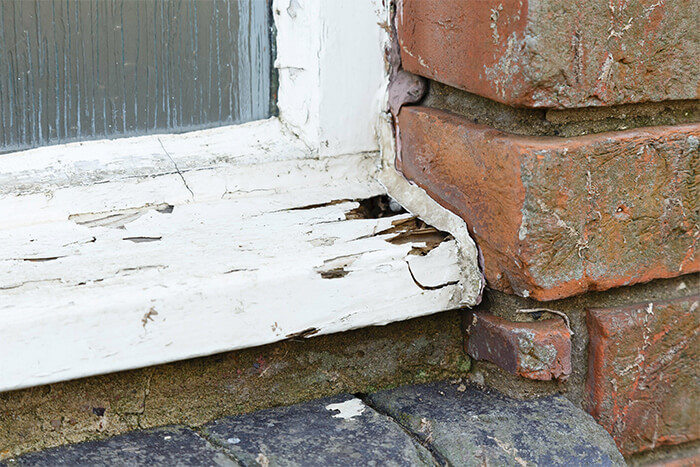Identifying Dry Rot
By Wirral Waterproofing
Dry rot is one of the more common and destructive forms of damp-related damage, made all the more dangerous because it cannot always be seen. It can manifest itself in any type of household timber, so long as the environmental conditions are suitable.
At Wirral Waterproofing, we have been treating dry rot across the peninsula for decades. In this article we explain what dry rot is, how it spreads, and how to recognise when you have it in your home.

What Is Dry Rot?

Dry rot is the common name for a specific type of fungus (serpula lacrymans) that is present within existing household timbers. Normally the spores of this fungus lie dormant but, in the right conditions, they can become active and start growing, causing the phenomenon we recognise as dry rot.

Why Does Dry Rot Grow?

Despite the name, dry rot needs damp, humid conditions in order to flourish. Specifically, if the water content of the timber exceeds 20% or so, you can expect the fungal spores to activate, sucking in the water and cellulose from the wood and spreading out to look for more.
Identifying Dry Rot

Dry rot can be encountered anywhere on your property where there are wooden timbers. Unfortunately, this means it could be taking place in areas that are out of sight, such as stairs, attics, and floorboards. There are several indicators that your home is suffering from dry rot. These include:
Mycelium growth:
This is the vegetative part of the fungus and it appears as a grey or white substance, not unlike cotton wool. This is the early stages of the dry rot life cycle as these basic roots seek out moisture in the wood.
Fruiting bodies:
If the dry rot established itself, it will produce these large, unpleasant growth with a rusty, reddish centre part and white outer regions. The centre part creates spores looking for more wood to settle in and these can often be visible in the air.
Dry, brittle wood:
Since dry rot draws out the moisture from the timbers, whatever is left will be brittle, shrunken, and warped. The grain of the wood may well develop large, jagged cracks, as a result.
Smell:
Even if you can’t see the dry rot, you can smell it. It smells damp, musty, and fungal. While this might not necessarily be dry rot, it is almost certainly evidence of damp, which can soo lead to it, if left unattended.
Your Local Dry Rot Specialists
If you think you have dry rot on your property, give Wirral Waterproofing a call. Contact us on 0800 334 5534 and arrange for one of our experts to perform a full dry rot survey on your property.

